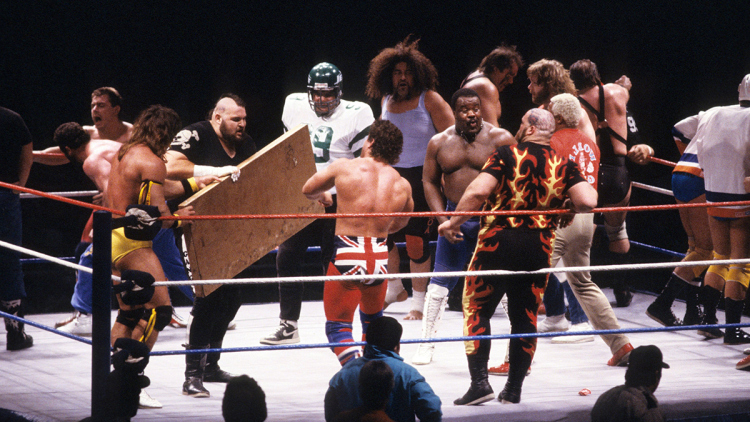Pop History: A Deep Dive Into the ‘Royal Rumble’
Courtesy of The Masked Man, writer for Grantland.com
Photo courtesy of Getty Images
When it started in 1988, the Royal Rumble was a gimmick — a battle royal slightly reconfigured to create a trademarked event that would sell tickets regardless of its participants. Today, of course, the men (and occasional women) are what the match is built on — the big names, the big entrances, and the career implications that accompany the outcomes. Sure, there’s almost always a title match to serve as a co–main event with the Rumble, but the Rumble is the real draw.
By the time the fifth performer entered that first Rumble, the event had already dispensed with the idea that it was a forum for wrestling — at least in the classical, collar-and-elbow-tie-up sense — and become wrestling’s top popularity contest. That fifth man was the ultrapopular Jake “The Snake” Roberts. Jake was never perceived as championship material by the WWF, but when he came in to make the save for Tito Santana, who was being pummeled by the Hart Foundation and Butch Reed, the crowd treated him like a main-eventer. They screamed at full volume for 30 seconds. It’s called a “pop” in the wrestling biz, and it’s the damnedest pop you’ve ever heard. (Santana, for his part, always got a strong but unspectacular pop — a good basis for gauging other reactions. I’d call it the Mendoza Line of wrestling pops, but I don’t want to venture into Jesse Ventura territory.) Every time Jake almost got tossed out, the volume escalated back to near madness. This was the first Rumble the crowd had seen, after all, and wrestling fans weren’t yet inoculated to the trope of participants hanging on the ropes and feigning near-elimination while they were taking breathers or killing time. It’s that tension — the tease, playing with (and against) expectations — that came to define the Rumble. That and the big pops.
Jake’s pop that night was an omen of the Rumble’s future — when fans would use it as their opportunity not just to cheer wrestlers, but also to make wrestlers.
Read the rest of this great article here!

